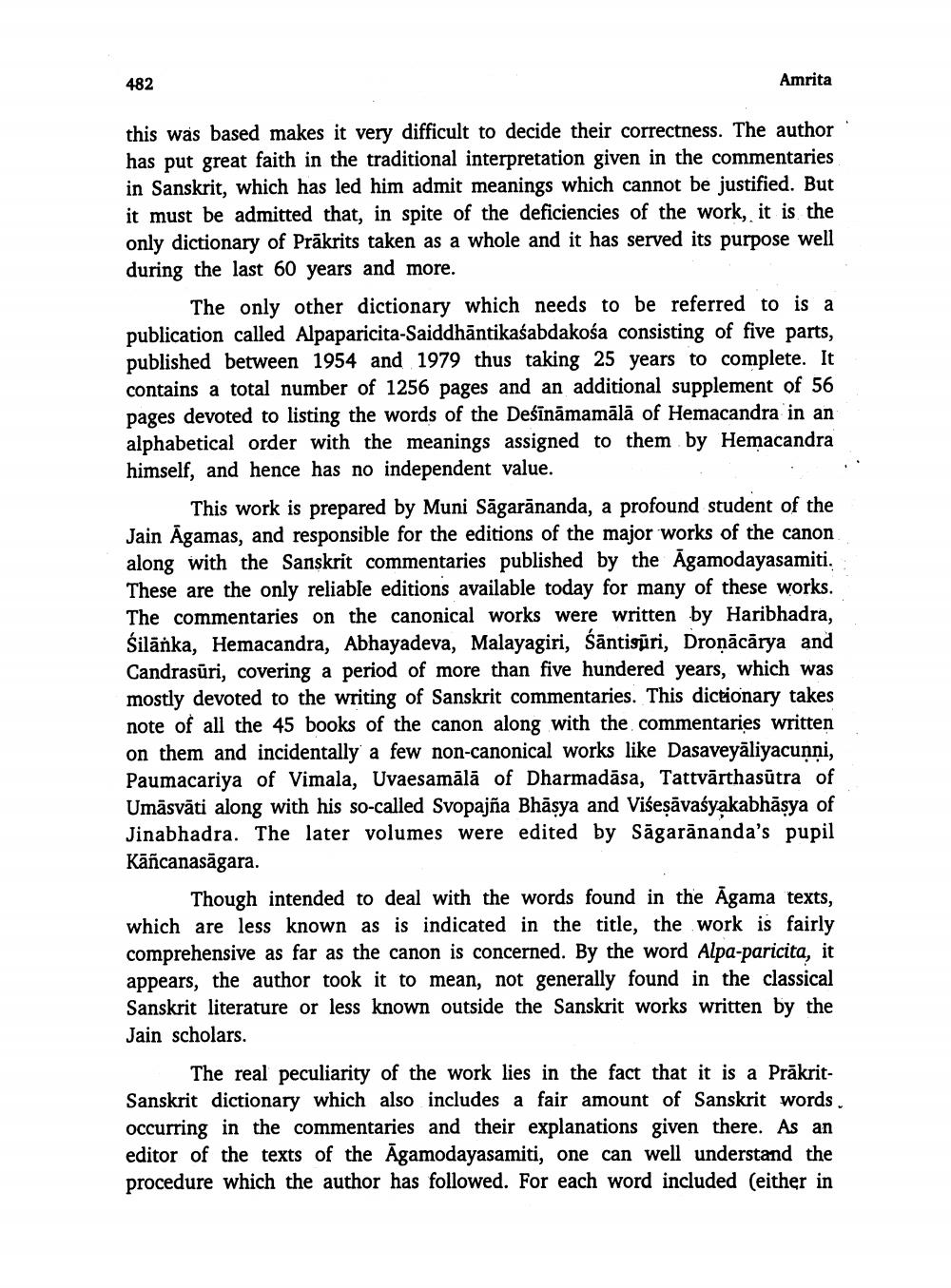________________
482
Amrita
this was based makes it very difficult to decide their correctness. The author has put great faith in the traditional interpretation given in the commentaries in Sanskrit, which has led him admit meanings which cannot be justified. But it must be admitted that, in spite of the deficiencies of the work, it is the only dictionary of Prākrits taken as a whole and it has served its purpose well during the last 60 years and more.
The only other dictionary which needs to be referred to is a publication called Alpaparicita-Saiddhāntikaśabdakośa consisting of five parts, published between 1954 and 1979 thus taking 25 years to complete. It contains a total number of 1256 pages and an additional supplement of 56 pages devoted to listing the words of the Deśīnāmamālā of Hemacandra in an alphabetical order with the meanings assigned to them by Hemacandra himself, and hence has no independent value.
This work is prepared by Muni Sāgarānanda, a profound student of the Jain Āgamas, and responsible for the editions of the major works of the canon along with the Sanskrit commentaries published by the Agamodayasamiti, These are the only reliable editions available today for many of these works. The commentaries on the canonical works were written by Haribhadra, Śilāńka, Hemacandra, Abhayadeva, Malayagiri, śāntigüri, Dronācārya and Candrasūri, covering a period of more than five hundered years, which was mostly devoted to the writing of Sanskrit commentaries. This dictionary takes note of all the 45 books of the canon along with the commentaries written on them and incidentally a few non-canonical works like Dasaveyāliyacunni, Paumacariya of Vimala, Uvaesamālā of Dharmadāsa, Tattvārthasūtra of Umāsvāti along with his so-called Svopajña Bhāsya and Višeşāvaśyakabhāsya of Jinabhadra. The later volumes were edited by Sāgarānanda's pupil Kāñcanasāgara.
Though intended to deal with the words found in the Agama texts, which are less known as is indicated in the title, the work is fairly comprehensive as far as the canon is concerned. By the word Alpa-paricita, it appears, the author took it to mean, not generally found in the classical Sanskrit literature or less known outside the Sanskrit works written by the Jain scholars.
The real peculiarity of the work lies in the fact that it is a PrākritSanskrit dictionary which also includes a fair amount of Sanskrit words occurring in the commentaries and their explanations given there. As an editor of the texts of the Āgamodayasamiti, one can well understand the procedure which the author has followed. For each word included (either in




